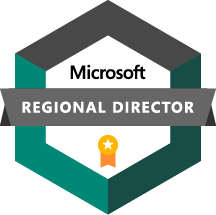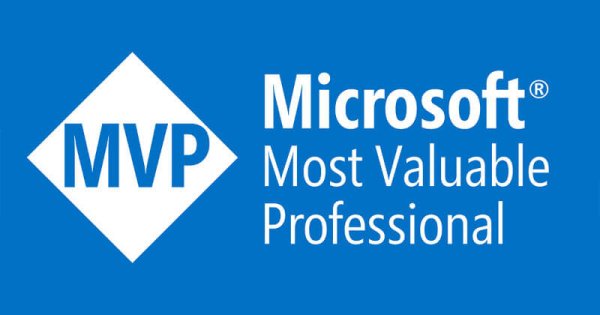Multicloud.is

When I registered the domain 'multicloud.is', it was with the explicit intention of writing this blog. Rarely have I encountered a less well understood and more broadly abused term in our industry than multicloud and hybrid cloud (although the conflation of AI and ML is up there), and I wanted to see if I could help. Through hundreds (thousands?) of customer, partner, internal, and community chats I've settled into the following as definitions that I find resonate and help people understand the different scenarios.
"Multicloud is the state that you're in when using two or more cloud environments across different ecosystems."
"Hybrid cloud is the usage of both on-premises and public clouds within the same ecosystem."
The usage of two or more cloud environments spanning different ecosystems is a long way of saying 'if you're using (e.g.) AWS and Azure in your business, you're in a multicloud state'. 'VxRail connected to GCP? Multicloud'.
Examples of on-premises and public clouds within the same ecosystem would include OpenShift in the cloud and OpenShift on-premises, or Azure Stack HCI and Azure, or GCP and Anthos. Intentionally crafted experiences which extend the ecosystem of that specific public cloud environment to on-premises and to the edge.
Hopefully with these definitions it becomes clear fairly quickly that multicloud is a state that's typically landed in by mistake or by happenstance, while hybrid cloud is always a state that's intentional and by design.
Multicloud is…
... not a state that everyone is in.
This is important to address right off the bat. We hear a lot of discussion about multicloud just now as though it's a given that everyone is in this state, but that's far from certain. There are many, many organisations who are leveraging a single platform just now, whether on-premises or in the public cloud, and many who have chosen this path intentionally in order to avoid the pitfalls that come from multicloud. In particular when you look at small to medium business this holds more true. The larger a business scales though, the more likely they are to fall into the multicloud trap, which leads us to…
Multicloud is…
… difficult!
As soon as you're in this multicloud state, things start to become challenging. Inherently everything from services to storage to security to support to licensing to skills to data protection and a whole lot more starts to get siloed and bucketised. The more cloud environments an organisation operates, the more this holds true and often exponentially so.
Very commonly we find that in these companies there are separate teams for different environments with their own operating procedures, tooling, security standards, and data protection routines. The cost inefficiencies are staggering, and very often the friction caused between teams is very real.
Multicloud is…
… solvable
Not wholesale, not in one fell swoop, not in a neat and easy way with a few clicks, but piece by piece and little by little, many of the challenges that multicloud brings can be solved, improved, or at the very least improved upon.
The first stage is to identify the commonalities, a couple of examples:
Storage - consistent storage capabilities in the multicloud have been a myth. Every environment you add to your cloud ecosystem adds its own way of managing, provisioning, accessing and tweaking with very little opportunity for unification. Building an application using Azure block blob and table storage APIs does not lend itself well to moving or scaling that application into (e.g.) a VMware environment on-premises. The application gets siloed within the one ecosystem, and the data trapped. If you're in a single cloud or hybrid environment this can absolutely be by design, but where application and data portability and mobility is a requirement for your org, this can be a major challenge.
Data Protection - each cloud vendor has their own way of approaching data protection, and again those mechanisms operate best within the siloes of their own ecosystems. There are tremendous efficiencies to be gained from implementing a common data protection system across all environments, not just from an operational perspective, but from a cost and vendor management one as well.
Multicloud is…
… a worthwhile challenge
Once you have identified the challenges that multicloud brings, you can start to address them in a holistic and unified way. Don't just focus on the technological challenges either, look at the people aspect with skills and knowledge silos that can develop, and the support and licensing challenges
Over the next few blogs in this series I'm going to delve into some of the announcements made at Dell Technologies World 23, and how they're designed to target specific and very common multicloud challenges, and then help to solve them, as well as some new announcements in the hybrid space which bring new and unique capabilities to bear there.
Finally though, if you're not currently in a multicloud state today, very carefully evaluate your next steps. It's a reality that nigh on every organisation will enter a long term durable state where they're using services in the public cloud, their own datacenters, and at the edge, but this doesn't need to be in a multicloud state. There are hybrid solutions you can bring to bear to enable consistency in services, management, automation, licensing, data protection, storage, licensing, and more all the way from edge to core to cloud, and if you have the opportunity to build out in this way from the start, there's no better way to go.
For everyone else though, stay tuned for how we can start to target, address, and make better the challenges caused by multicloud and take you from a state of multicloud by default, to multicloud by design.


